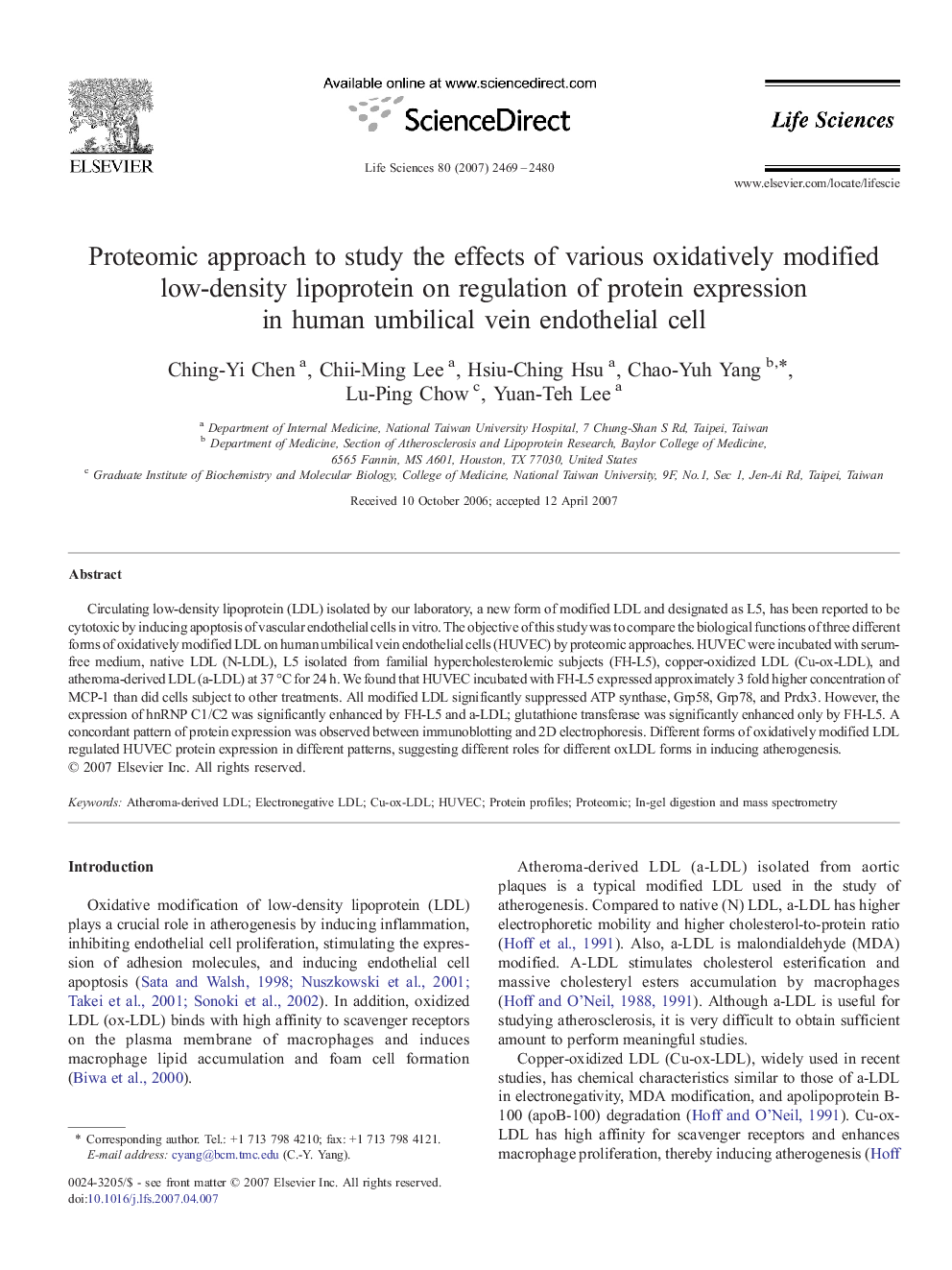| Article ID | Journal | Published Year | Pages | File Type |
|---|---|---|---|---|
| 2553265 | Life Sciences | 2007 | 12 Pages |
Circulating low-density lipoprotein (LDL) isolated by our laboratory, a new form of modified LDL and designated as L5, has been reported to be cytotoxic by inducing apoptosis of vascular endothelial cells in vitro. The objective of this study was to compare the biological functions of three different forms of oxidatively modified LDL on human umbilical vein endothelial cells (HUVEC) by proteomic approaches. HUVEC were incubated with serum-free medium, native LDL (N-LDL), L5 isolated from familial hypercholesterolemic subjects (FH-L5), copper-oxidized LDL (Cu-ox-LDL), and atheroma-derived LDL (a-LDL) at 37 °C for 24 h. We found that HUVEC incubated with FH-L5 expressed approximately 3 fold higher concentration of MCP-1 than did cells subject to other treatments. All modified LDL significantly suppressed ATP synthase, Grp58, Grp78, and Prdx3. However, the expression of hnRNP C1/C2 was significantly enhanced by FH-L5 and a-LDL; glutathione transferase was significantly enhanced only by FH-L5. A concordant pattern of protein expression was observed between immunoblotting and 2D electrophoresis. Different forms of oxidatively modified LDL regulated HUVEC protein expression in different patterns, suggesting different roles for different oxLDL forms in inducing atherogenesis.
